We entered Tikal and I headed immediately toward the Mayan ruins I’d come so far to see. But a rustling in the jungle canopy made me stop and look up some distant relatives.

I was in the presence of a Geoffroy’s Spider Monkey (Ateles geoffroyi). One source describes these animals as
among the smartest of primates. A 2007 study found that only humans, orangutans and chimpanzees are smarter. It’s suggested that the spider monkey’s acute intelligence may have arisen because of their fruit-eating, or “frugivorous,” diet, which requires them to identify and memorize many fruit types, and to remember the fruits’ locations. Despite their intelligence, spider monkeys don’t make tools. That coincides with the fact that their hands bear only vestigial thumbs, thumbs being handy for handling tools. This near-thumblessness is a feature of the entire genus Ateles, the name Ateles meaning “imperfect,” referring to the hands lacking decent thumbs.

They are, unfortunately, an endangered species whose population is declining worldwide. While I was photographing this one high up in the jungle canopy, it did a classic swing from tree to tree, missed a branch, and fell. “No!” I blurted out, horrified. But after dropping maybe 10 meters, he (or she) caught a branch and swung upward again with some I-meant-to-do-that swagger. Disaster narrowly averted? Or just another day at the office for this primate?
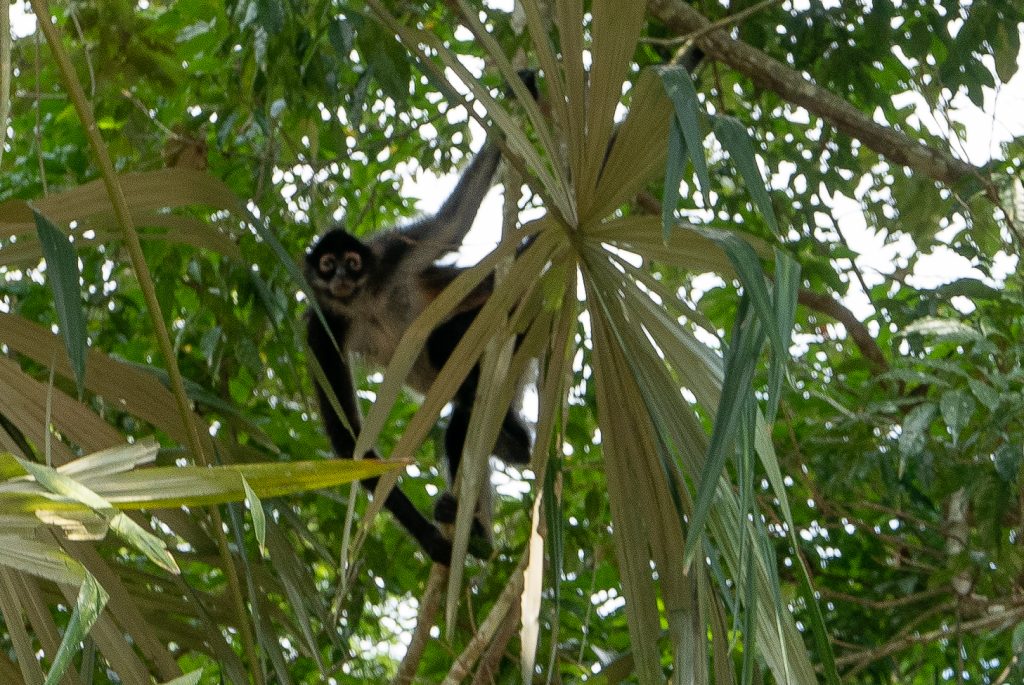
This was only the second time in my life I’ve had the thrill of seeing monkeys in the wild. The first time was in Anuradhapura, Sri Lanka, when I got the prickly feeling I was being quietly watched, looked up, and realized that I was a couple meters away from a family of Gray Langurs. In contrast, spider monkeys of Tikal announce their presence by acrobatics performed high up in the canopy.
Later in the afternoon, I spotted a couple white-nosed coatimundis (Nasua narica). They’re members of the raccoon (Procyonidae) family, but have longer tails, stouter builds, and more highly sloped skulls than the raccoons of the northern United States. They’re reportedly quite intelligent and are found throughout Central America, Mexico, and as far north as Arizona.
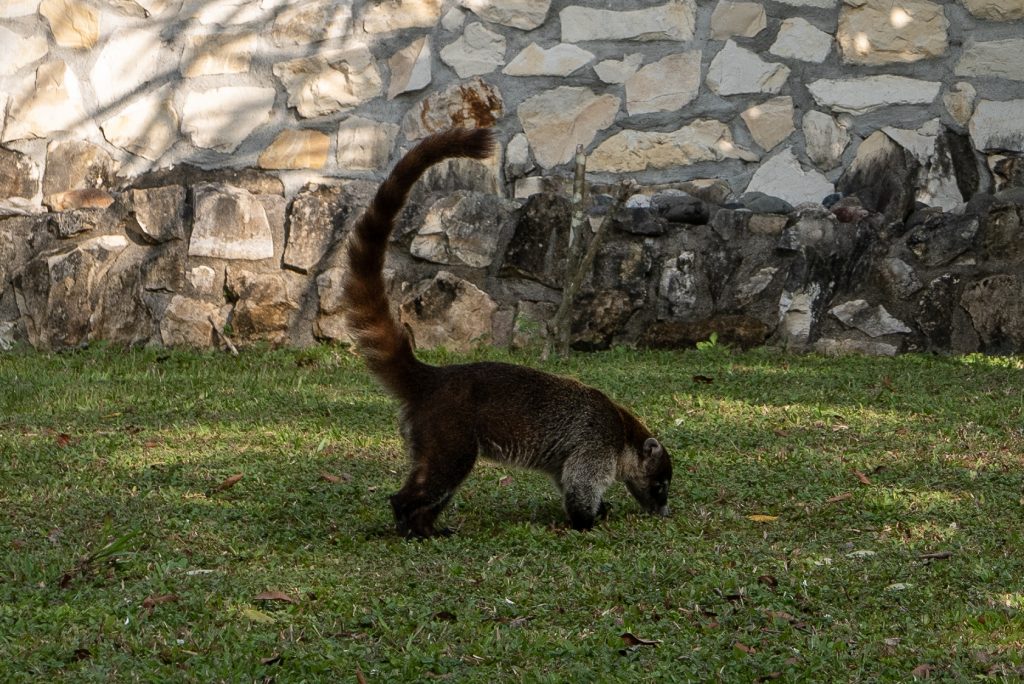
They looked cute from afar, but I was careful not to get too close. I wouldn’t want that flexible snout fastened onto one of my legs.
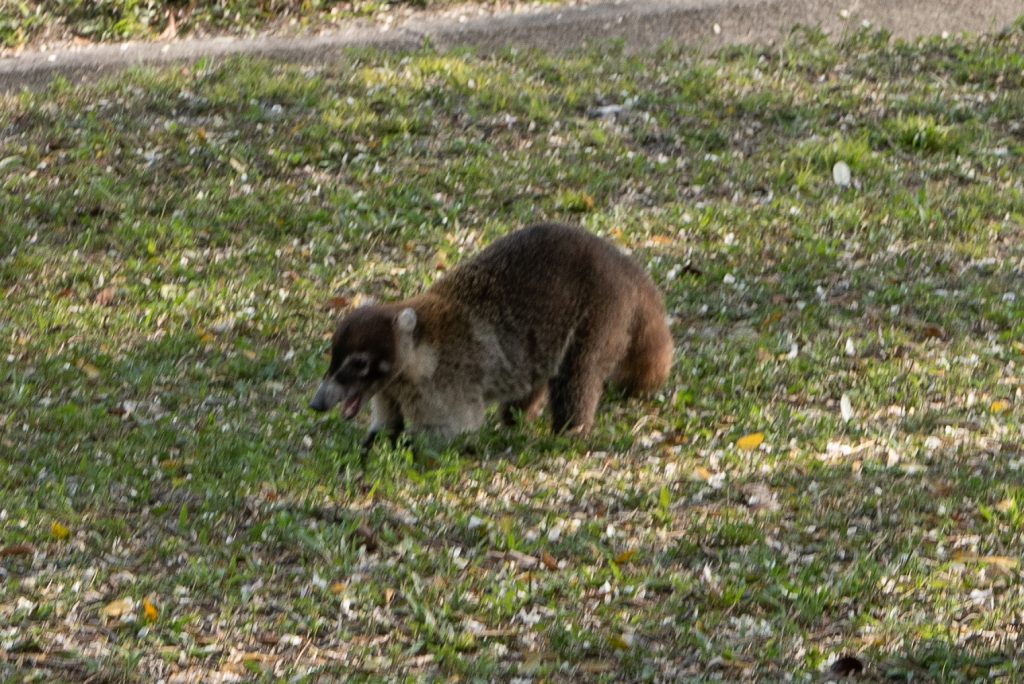
I was on my way out of Tikal when I saw these zany wild turkeys. At first, I couldn’t quite believe my eyes. Surely, I thought, these birds have been doctored up and colored by an exuberant kindergartener.
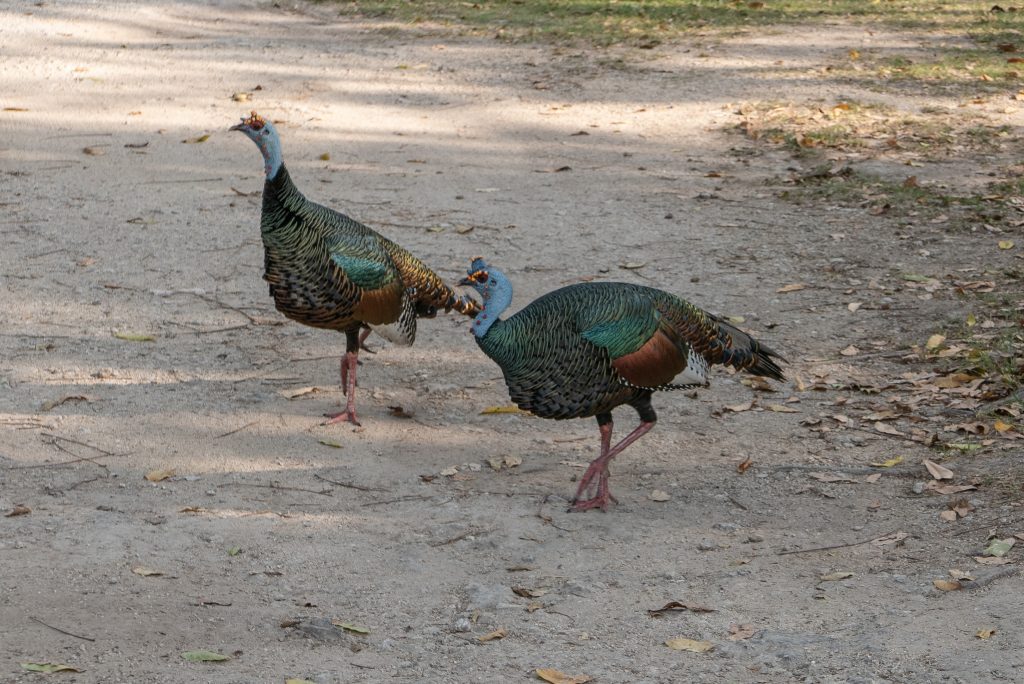
But no, these birds are quite real. They’re ocellated turkeys and they’ve lived in the Yucatan peninsula and the northern portions of Guatemala and Belize since Mayan times. They appear in Mayan glyphs. I didn’t get to hear their calls, but apparently they sound like the increasingly rapid staccato taps you hear when you drop something onto a hard surface and it bounces faster and faster before coming to rest. These birds don’t so much gobble as sing.
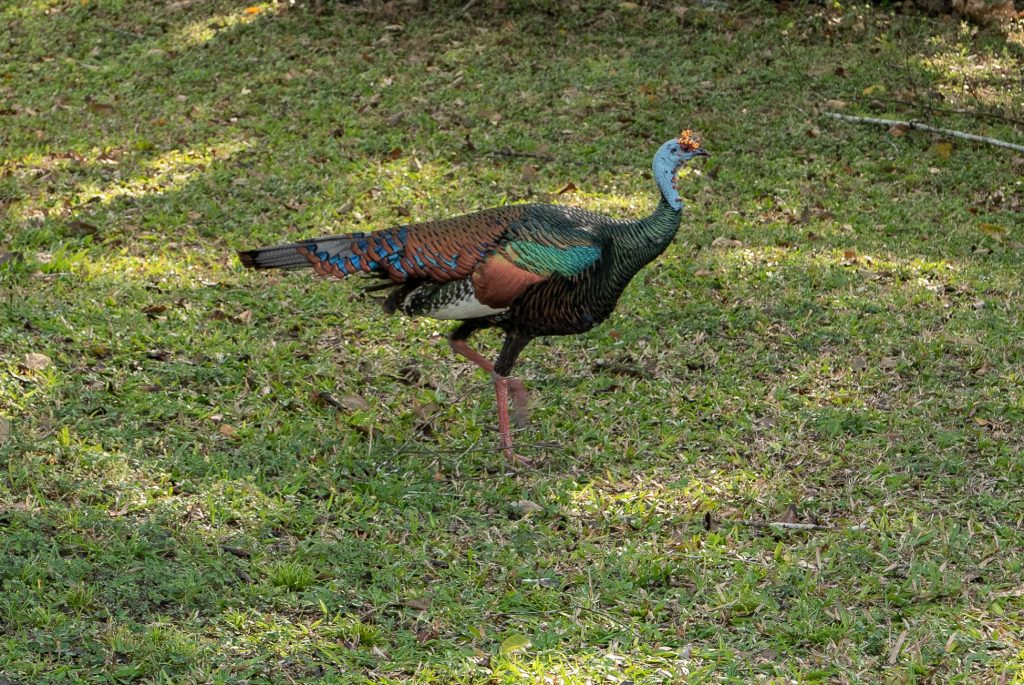
I’d come to Tikal to see human history in the ruins of a Mayan city. But once there, my interest expanded to include the natural history of the area. I’ve seen amazing man-made monuments. I’ve seen animals in the wild. Seeing the two together at Tikal and glimpsing a more wholistic view of life on Earth was surprisingly fulfilling.
As always, many thanks to Lori Seubert for sharing her zoological perspicacity with me and identifying the animals I saw on this trip. I’m still pretty ignorant of the animal world, but under her patient instruction, I’m learning.


































Speak Your Mind